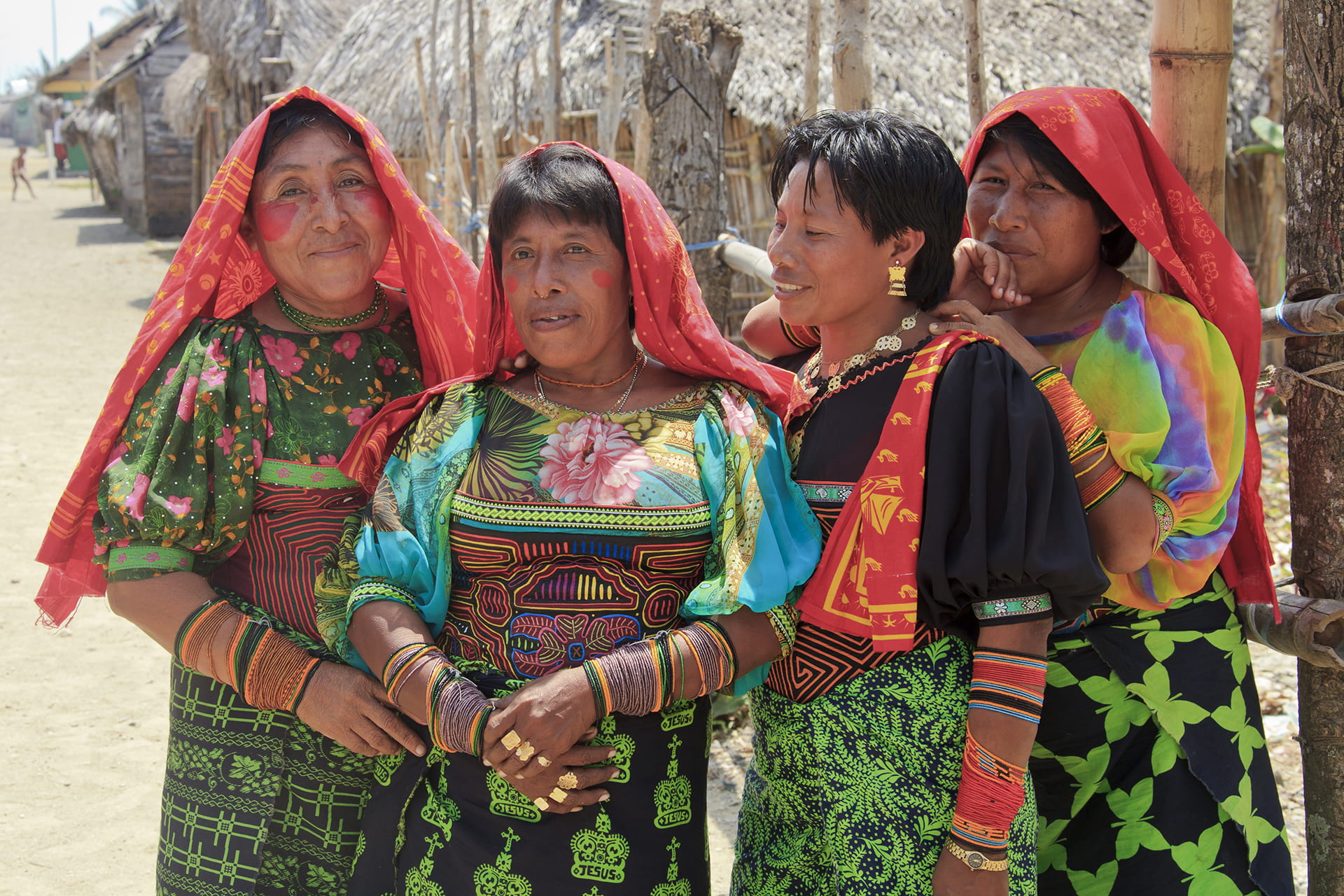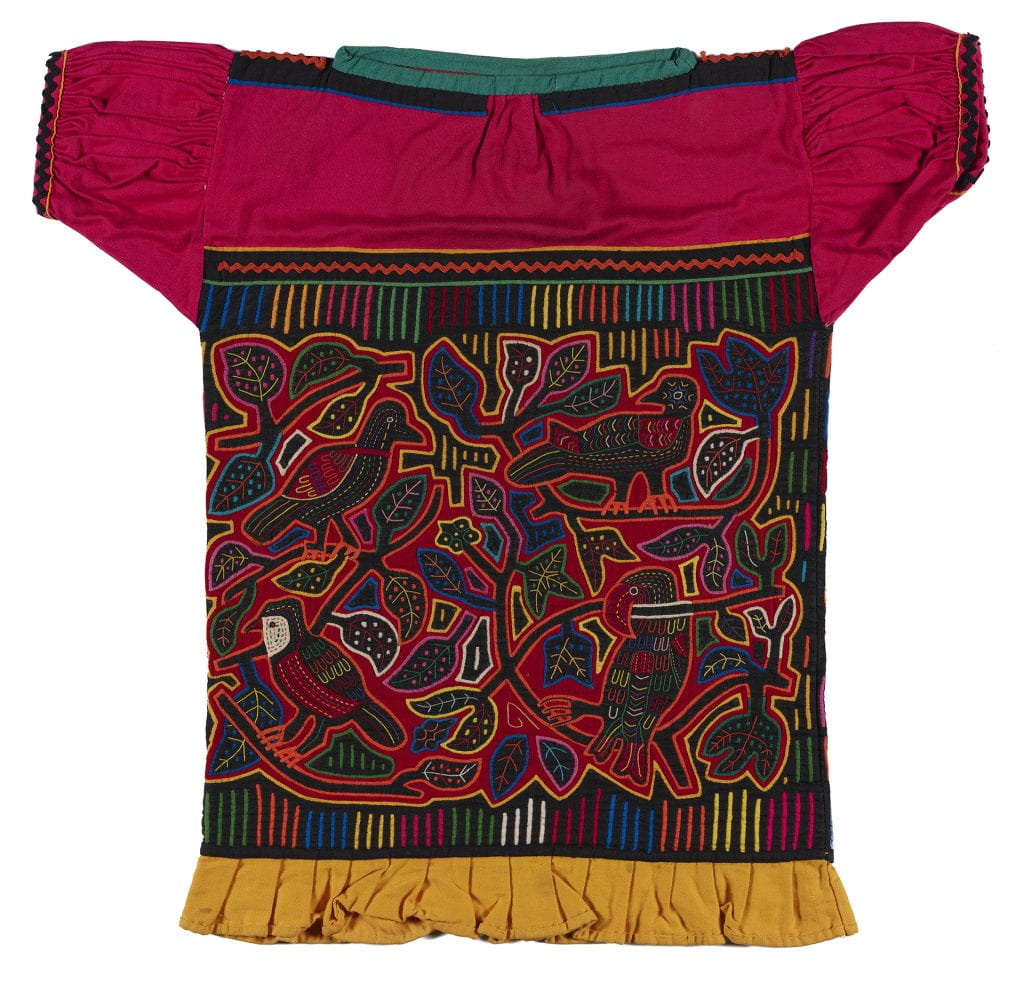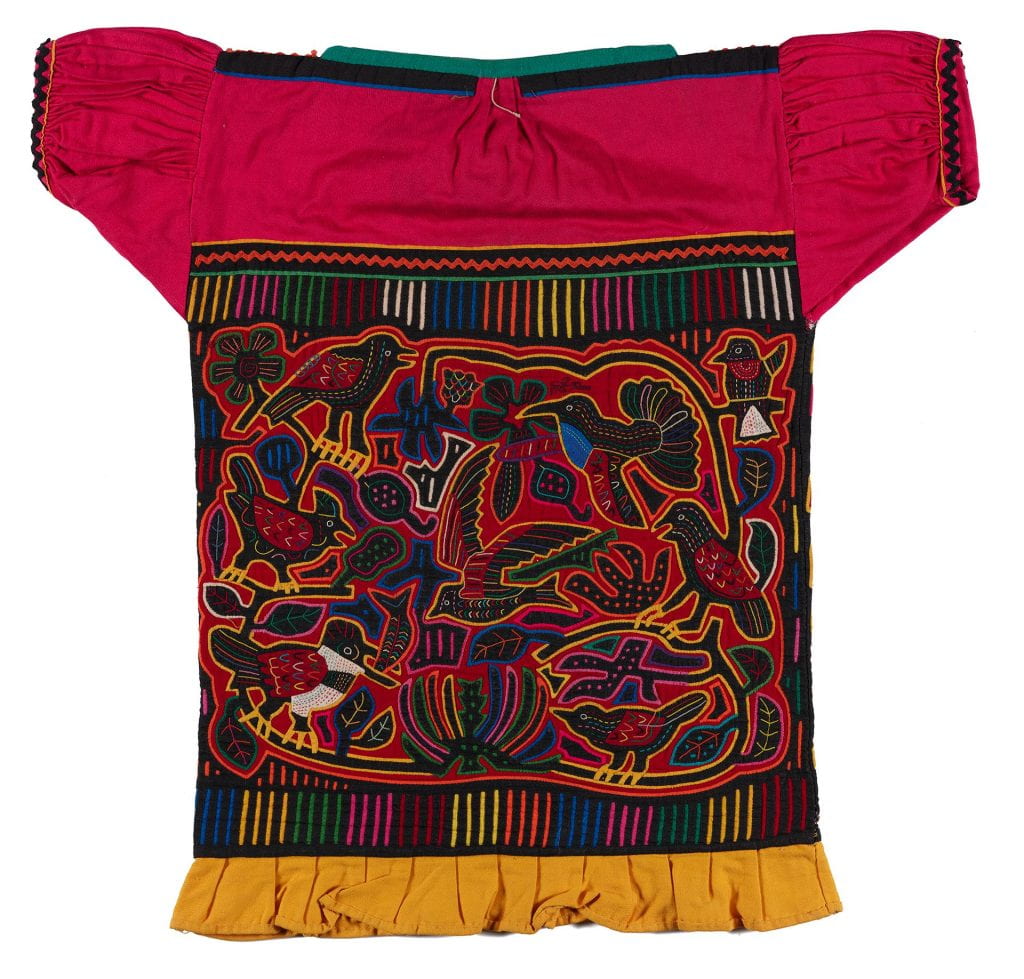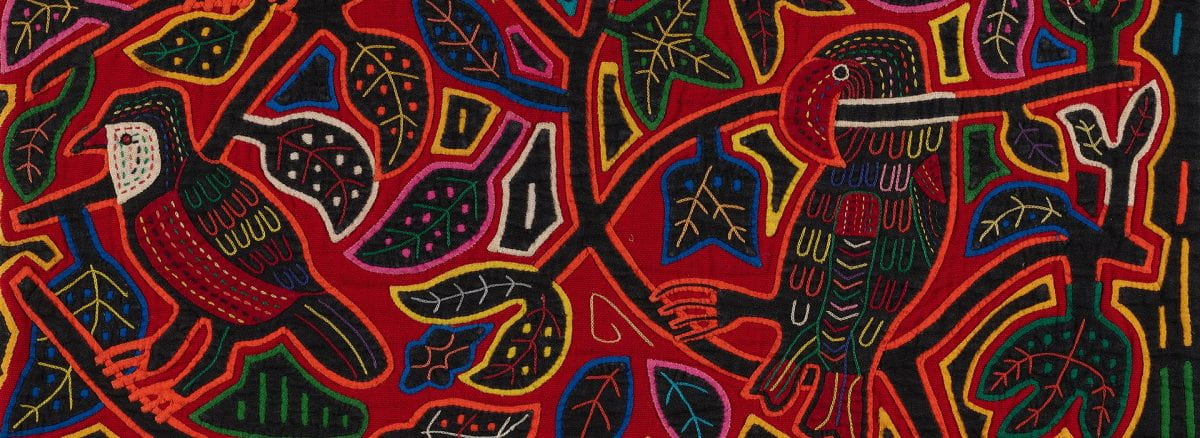On the San Blas Islands, an archipelago off the Atlantic coast of Panama, the Indigenous Guna women wear striking “mola” blouses, as well as wrapped skirts, red and yellow headscarves, and beads wound around their arms and legs. The word “mola” refers to the colorful panels that embellish the front and back of each blouse, as well as to the blouse itself.

Women create the panels using a reverse appliqué technique that is passed down through generations. A woman bastes together two or more layers of brightly colored fabric and then cuts a design into the top layer(s). She tucks in the cut edges and finely hems them in matching thread, revealing the color of each layer underneath. The bottom layer remains intact to serve as a background color and support for the other pieces. Positive appliqués and embroidery add detail to the designs.

Molas evolved from the intricate body painting the Guna used up until the mid-18th century. Many of the designs are inspired by nature, such as the birds and leaves on this 20th-century blouse, although molas made for tourists sometimes reference pop culture.
In 1918, the government of Panama tried to assimilate the Guna and ban traditional dress. The Guna resisted – wearing molas to protest. They were granted autonomy in 1925, including over their culture and attire.

Researched by Rebecca Haase
Rebecca Haase has been a docent with the museum since 2007. She has previously lived in Hong Kong and Singapore, where she was a docent at the Asian Civilisations Museum. She is also active in the Asian American Forum.
